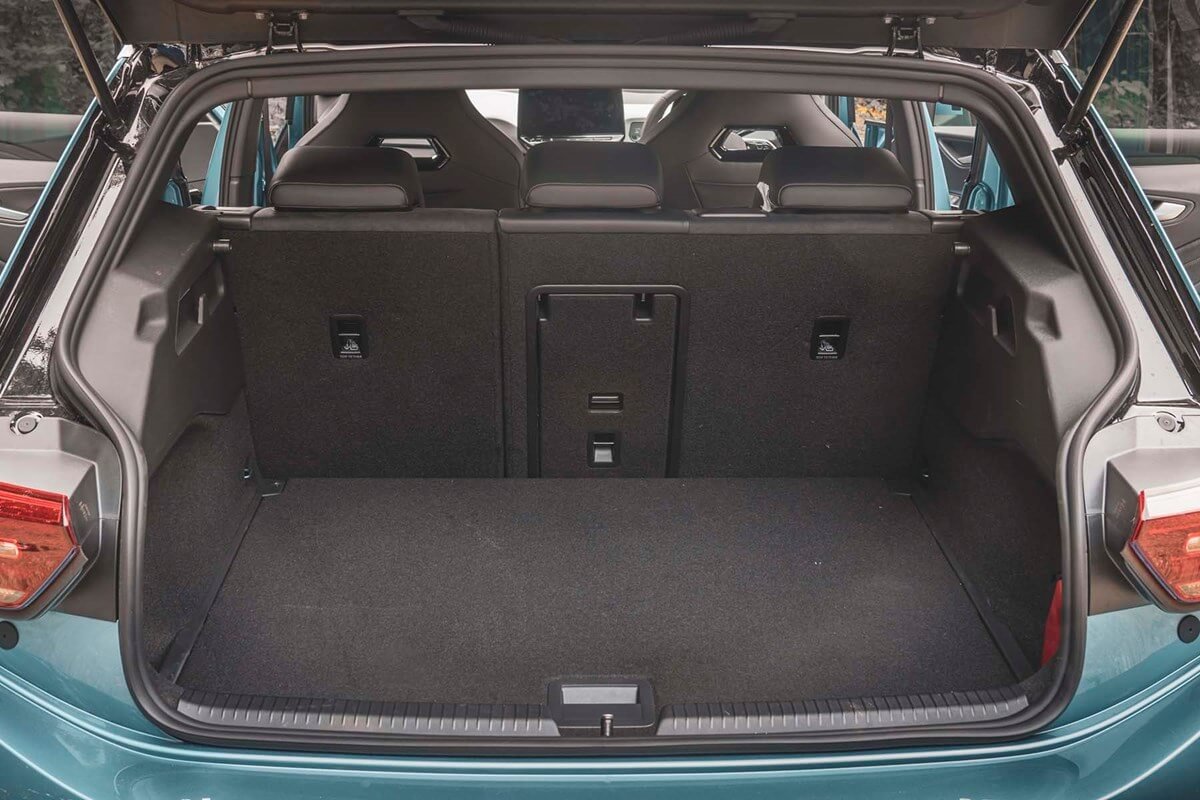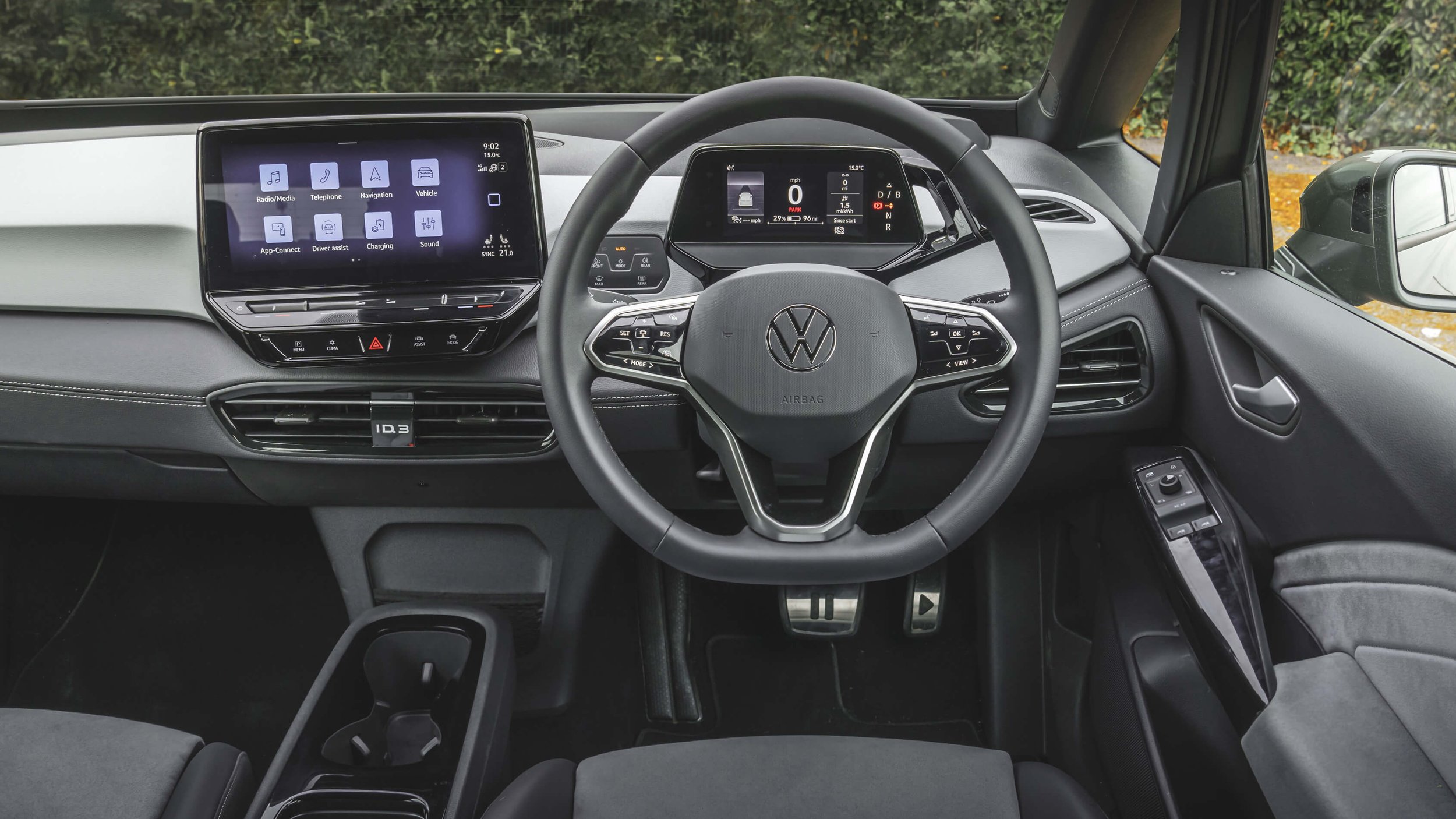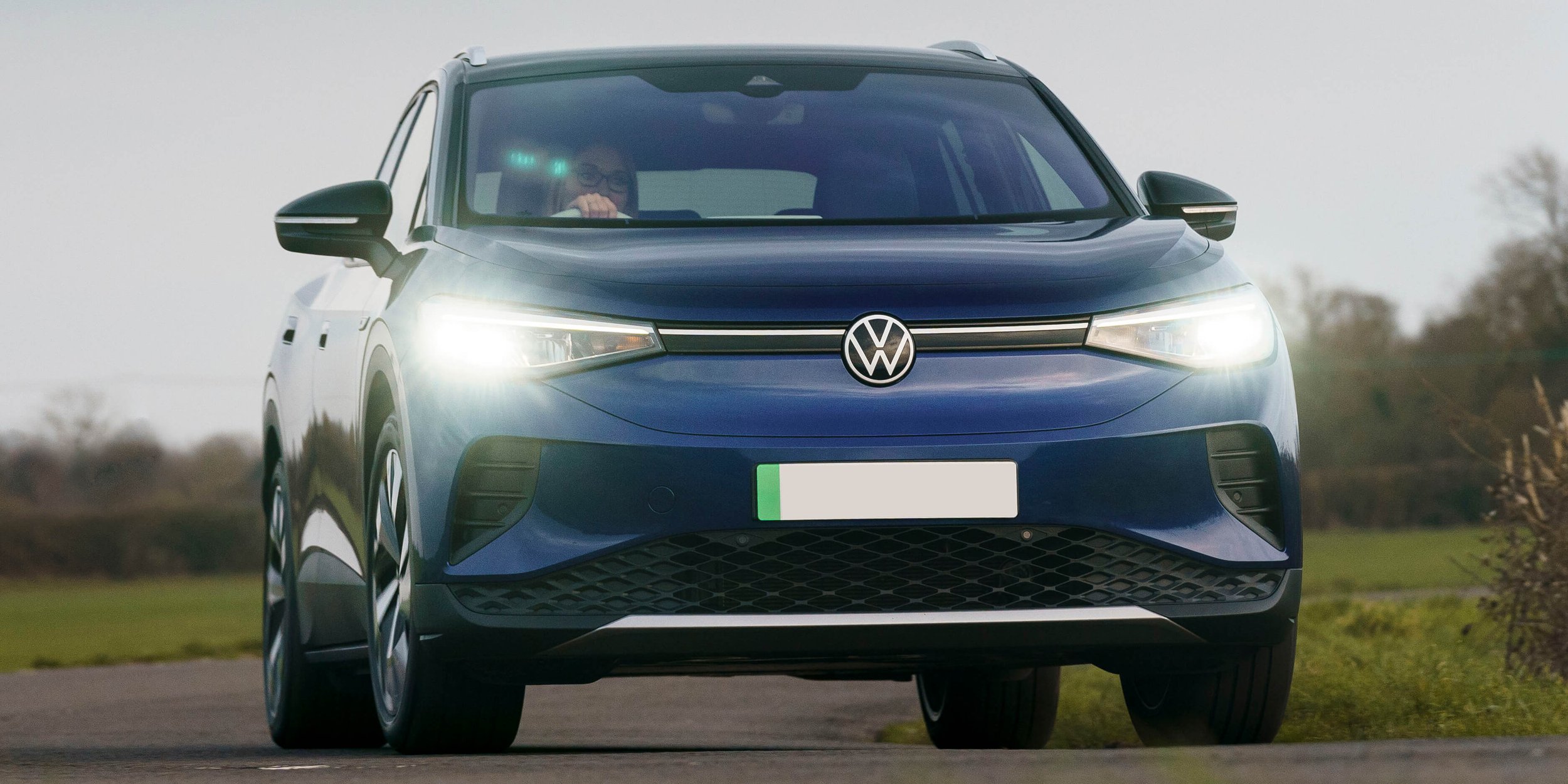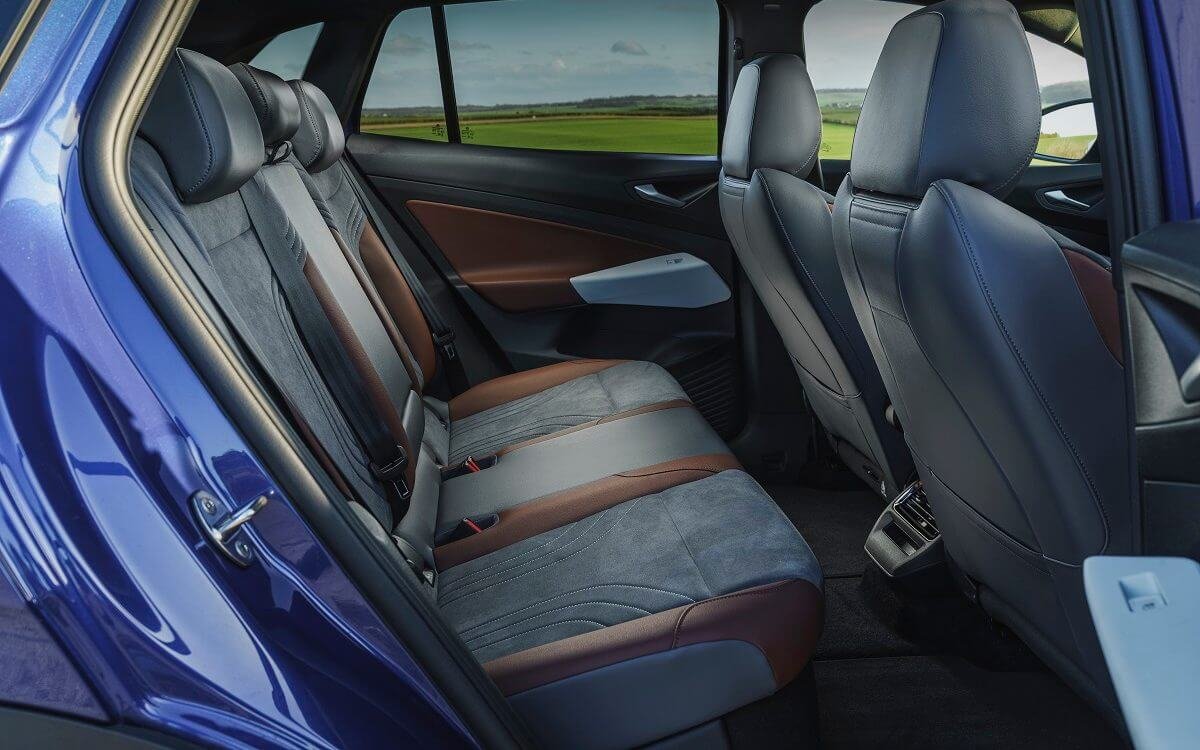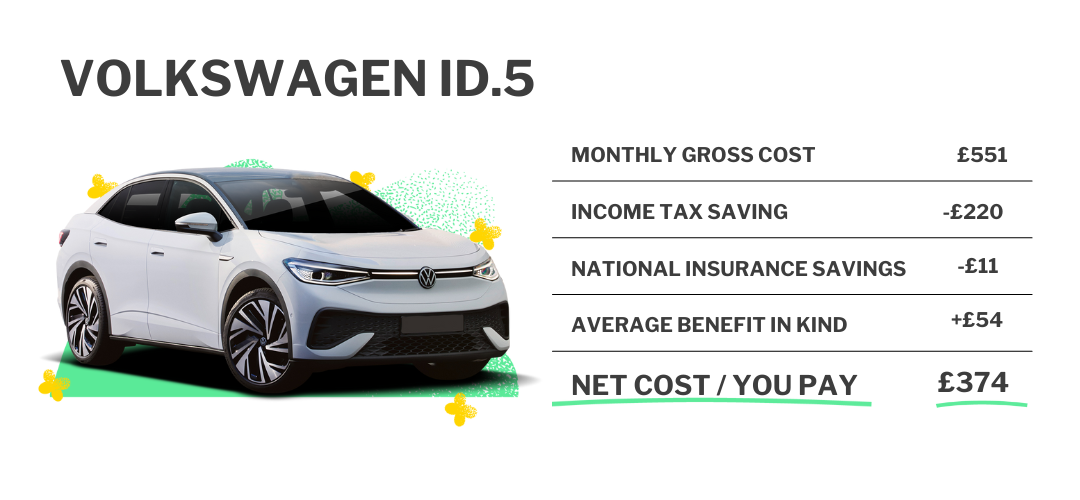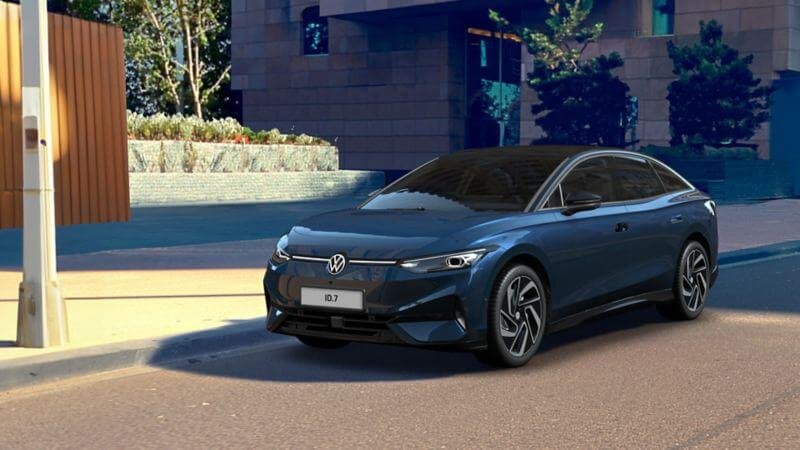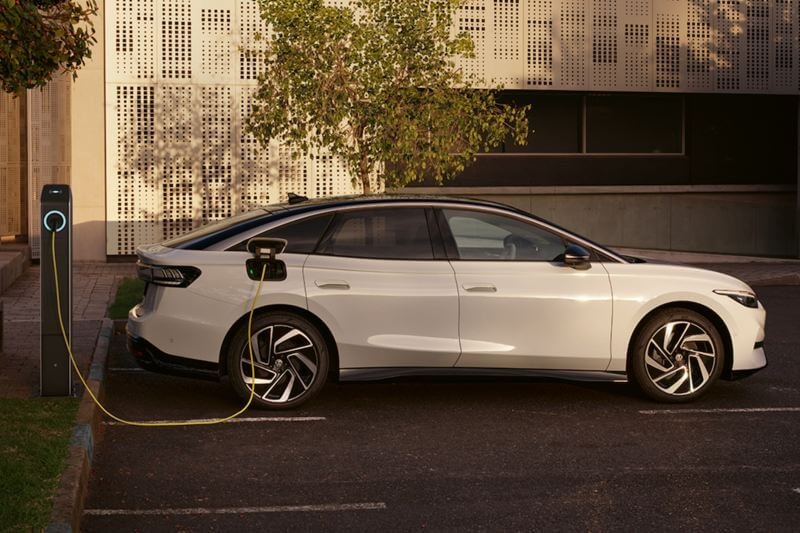What’s the best Volkswagen to salary sacrifice?
The inaugural Volkswagen car, named the KdF-Wagen, which translates to "strength through joy," made its debut in 1938. Sporting a distinctive round shape and featuring an air-cooled, rear-mounted engine, the KdF-Wagen symbolized an era. Over the years, Volkswagen has evolved into an icon, showcasing models ranging from the classic Beetle to the modern Polo.
During the years 1992 to 1996, Volkswagen ventured into the realm of electric vehicles with the Golf III CitySTROMer. This pioneering production marked a significant milestone, with 120 units sold, setting the stage for the electric revolution. Subsequently, in 2013, the Volkswagen e-Golf was unveiled at the Frankfurt Motor Show, boasting a range of 80 to 118 miles. Volkswagen's commitment to electric mobility has since flourished, with a diverse range of electric cars tailored to cater to a broad spectrum of preferences.
This image is sourced from Automotive News Europe
We present a curated selection of electric Volkswagens available for lease through The Electric Car Scheme, facilitating electric vehicle adoption via the salary sacrifice scheme. Employees stand to benefit significantly, with potential savings ranging between 20 and 50%, as the lease costs are deducted directly from their pay before tax. You can calculate your personalised savings on our website here.
Let's delve into the world of electric Volkswagen, ready for salary sacrifice.
Everything you need to know about the Volkswagen ID.3
The Volkswagen ID.3 stands as an all-electric hatchback, serving as the zero-emission counterpart to the Golf. In 2023, the ID.3 underwent a design refresh, featuring a new front bumper, airflow-directing fins on either side and a redesigned bonnet. Its sleek roofline is complemented by a roof-lip spoiler at the rear and stylish taillights, contributing to its modern aesthetic.
Internally, the ID.3 boasts refined materials, including a sponge covering on the dashboard and cloth as the standard upholstery for the seats. The leatherette steering wheel is equipped with touch-sensitive buttons, although their functionality can be a bit intricate. The vehicle is also equipped with a 10.0-inch infotainment touchscreen and a 5.3-inch driver's display. Anticipated for a mid-year upgrade is a larger 12.9-inch touchscreen, along with the introduction of an augmented-reality head-up display. The touch-sensitive infotainment control sliders will continue to be part of the user interface.
What’s it like to drive?
The Volkswagen ID.3 features a lightweight steering wheel, enhancing manoeuvrability in urban areas and on country lanes. Its small turning circle facilitates easy navigation through narrow roads and car parks. The vehicle's extensive windscreen, wind mirrors, and rear windows contribute to excellent all-round visibility. Opting for the 20-inch wheels may result in a sharper ride over bumps, whereas the 18 or 19-inch alloy wheels provide ample cushioning.
This image is sourced from Automotive News Europe
The ID.3 exhibits swift acceleration from 0, making it advantageous for situations like accelerating out of junctions. On faster roads, the suspension effectively absorbs road bumps, ensuring a smooth ride. The Pro and Pro S variants are equipped with a single motor on the rear axle, and the 204mph motor delivers ample performance for overtaking and merging onto highways. Notably, its efficiency on faster roads is commendable, averaging 3.8 miles per kWh.
With a kerb weight of 1,815kg, the ID.3 carries a substantial mass, potentially noticeable on windy roads. Engaging the Sport drive mode enhances the steering feel and stiffens the suspension, catering to a more dynamic driving experience. This adjustment proves beneficial for faster driving scenarios. However, in normal mode, there might be a tendency for the front wheels to lose grip when navigating corners at higher speeds.
Inside the ID.3: Space and Practicality
The interior of the Volkswagen ID.3 exudes a sense of spaciousness and practicality. Ample storage options include well-sized door bins and a net beneath the central touchscreen. The centre console proves highly functional, featuring two large cupholders, a small bin for keys, and a diagonally-mounted wireless charger for smartphones. USB-C ports are also available for device connectivity.
This image is sourced from Parkers
Seating adjustments and the overall driving position offer a commendable range, contributing to a comfortable experience. The back seats' comfort is contingent upon the chosen trim level—opting for the Pro allows accommodation for three individuals on the bench, albeit it may feel snug with three adults. In contrast, selecting the Pro S eliminates the middle seat, replacing it with cupholders in the armrest. Therefore, for those requiring space for three passengers, the Pro S may not be the ideal choice.
The boot boasts a capacious 385 litres of storage, characterized by its square shape. Additionally, practical features such as a 12V socket and hooks for hanging bags further enhance the utility of the space.
Interior space and infotainment
This image is sourced from Heritage Automotive
As previously mentioned, the interior of the ID.3 imparts a sense of spaciousness and openness, attributed to the expansive windscreen and optional panoramic sunroof—standard on the Pro S and available as an option on the Pro—welcoming abundant natural light into the cabin. The 2023 update brought enhancements to the cabin materials, eliminating animal-based components. The main dashboard and armrest surfaces now offer increased cushioning, while interior colour options are limited to black or grey. However, the ambient lighting provides a delightful splash of colour.
The ID.3 features a 10.0-inch touchscreen for the infotainment system, accompanied by a 5.3-inch driver's display as standard. An additional 12.9-inch touchscreen option is set to be introduced in the upcoming summer. While the screens are easily readable, their use while driving can be challenging. Touch-sensitive sliders for media volume and climate control may prove elusive when adjusting on the move. As expected, Apple CarPlay and Android Auto are available wirelessly.
An optional augmented reality head-up display, projected onto the windscreen, enhances the driving experience. This feature provides clear direction arrows during navigation, along with speed and other pertinent information, ensuring visibility regardless of weather or time of day.
This image is sourced from Driving Electric
Several additional options are primarily cosmetic, but the Exterior and Exterior Plus packs incorporate valuable features. Both include adaptive matrix LED headlights, ambient lighting for the front grille, and rear tinted glass. The Plus versions further introduce front and rear shock absorption, adaptive chassis control—allowing personalized car setup—and progressive steering.
Range, charging and tax
The ID.3 Pro S boasts an enhanced range of 347 miles, surpassing the Pro variant, which offers a range of 266 miles. Despite its extended range, the Pro S exhibits a slightly slower acceleration, taking 7.9 seconds to reach 0-60mph compared to the Pro's 7.4 seconds. This variance can be attributed to the Pro S carrying an additional weight of 100kg.
Charging capabilities also differ between the two models. Utilising an 11kW charger, the Pro requires just over six hours for a full charge, whereas the Pro S, with its higher charging rate, extends the charging time to 8 hours.
A noteworthy benefit of electric cars, including the ID.3 models, is the exemption from vehicle excise duty, leading to long-term cost savings.
You can pay £385 per month for a Volkswagen ID.3 and save £252 on Income Tax and National Insurance Savings with The Electric Car Scheme.
Salary sacrifice a Volkswagen ID.4
The ID.4 has been crafted to emulate the design of the ID.3, although it distinguishes itself as an SUV, positioning itself among alternatives such as the Tesla Model Y and Nissan Ariya. Offering a range of engine and battery options, power outputs range from 146hp to 295hp, and the overall range spans from 213 miles to 328 miles. The standard configuration features rear-wheel drive, while top specifications include all-wheel drive.
Notable exterior features include slim LED headlights, interconnected by a full-width LED light bar. A distinctive characteristic is the absence of a traditional grille, as electric cars, including the ID.4, do not necessitate one, given the absence of a hot engine requiring cooling.
What’s the ID.4 like to drive?
The VW ID.4 presents the typical advantages of electric vehicles, including smooth power delivery and rapid acceleration, coupled with SUV perks such as an elevated driving position and excellent visibility. The regenerative braking system is notably progressive, facilitating precise judgment for applying brakes at lower speeds. However, rear visibility is somewhat hindered by substantial pillars on either side of the rear window. Even the base Pure trim comes equipped with front and rear parking sensors, a rearview camera, and park assistance as standard features. Oncoming vehicle brake assist and dynamic road sign display are also inclusive across all trims.
This image is sourced from CarWow
At motorway speeds, the cabin exudes refinement, effectively containing wind, tyre, and road noise. While the lower-powered models may not provide the same level of acceleration, the ID.4 is designed more for comfortable cruising than spirited performance. All models come standard with adaptive cruise control, lane assist, and a driver fatigue alert. On country lanes, the ID.4 displays firm suspension, maintaining stability in corners and contributing to a comfortable driving experience.
Inside the ID.4: Space and Practicality
The ID.4 interior provides ample space, accommodating five adults comfortably, even though it may not be the largest SUV in its class. The front boasts sufficient headroom and legroom, and the steering wheel and driver's seat offer extensive adjustment options to help achieve the ideal driving position.
This image is sourced from Electrifying
Thoughtful storage solutions abound, with the centre console housing two removable cupholders that, when taken out, create additional storage space. Between the front seats, there's another storage bin with a retractable cover, incorporating a wireless charging pad and USB-C slots. Additional storage bins are conveniently placed in the front. In the rear, the generously sized back row comfortably accommodates two adults on extended journeys. The middle seat is accessible without a floor lump, providing space for another adult, although shoulder room may be compromised. ISOFIX mountings are available in the two outer seats, accompanied by two large door pockets, air vents, and USB-C slots positioned by the middle passenger's feet.
The boot space totals an impressive 543 litres, surpassing competitors like the BMW iX3 with 510 litres and the Kia EV6 with 466 litres. Practical features include hooks and straps to secure luggage, a 12-volt socket, and a small compartment under the boot floor for charging cables. Certain trims offer an adjustable boot floor, expanding the load space to 1,655 litres with the rear seats folded down.
Interior style, infotainment and accessories
This image is sourced from Parkers
The interior design adopts a minimalistic approach, featuring a 10-inch version as standard on the Life and Style trims, while the GTX versions are equipped with a larger 12.0-inch unit. Both variants offer the same features, including standard Apple CarPlay and Android Auto functionality. The icons and layout present a sharp appearance, yet responsiveness to instructions can be occasionally sluggish, and voice control may not always be reliable. Touch-sensitive controls on the steering wheel react differently based on whether they are pressed or swiped.
Notably, the vehicle comes with a digital driver display, LED headlights, heated seats, and adaptive cruise control, even on the base trim. Moving up to mid-spec trims introduces additional features such as keyless access and a panoramic sunroof, elevating the overall ambience of the cabin.
Range, charging and tax
The VW ID.4 presents a range of choices in battery capacity and power outputs, allowing you to select either a 52kWh or 77kWh battery. Power outputs span from 146hp to 295hp, with corresponding ranges extending from 220 to 328 miles. The available combinations include Pure, Pro, Pro Performance, Pro Performance 4MOTION, and GTX.
Pro models are equipped with a larger 77kWh battery and 171hp, offering an impressive range of 328 miles. Pro Performance versions boast 201hp with the same battery pack, achieving a 0-62mph acceleration in 8.5 seconds while maintaining an unchanged range. Using a 7.4kW wall box, it takes approximately 12 hours for a complete charge. These configurations provide the longest range for the ID.4.
Both Life Edition and Style Edition trims offer a choice of power options. The Life Edition trim, in addition to the available combinations, can be paired with the Pro Performance 4MOTION, utilizing the same 77kWh battery. This configuration incorporates an additional electric motor on the front axle, transforming it into an all-wheel-drive system and boosting power to 261hp. Acceleration improves significantly with a 6.9-second 0-62mph time, and the range slightly decreases to 317 miles.
Learn more about the ID.5
This image is sourced from Auto Express
The Volkswagen ID.5 is an electric family SUV featuring a coupe-style design. Offering practicality and ease of driving, it shares all its mechanics with the ID.4 but distinguishes itself by adopting a sloping coupe roofline instead of the traditional SUV styling. All variants of the ID.5 come equipped with a 77kWh battery, providing an impressive range of up to 313 miles. Utilizing a public 130kW charger, it takes just thirty minutes to charge from 10% to 80%, showcasing a rapid charging capability for added convenience.
What’s it like to drive?
Within urban environments, the ID.5 exhibits agility, with the raised driving position enhancing visibility ahead. However, the rear roof section's angle results in a smaller rear window, compromising the view from the back. Standard features such as surround parking sensors and a rearview camera aid manoeuvrability. The firm suspension, while contributing to a degree of jitteriness, efficiently transmits bumps into the cabin.
Transitioning to the motorway, the ID.5 exudes refinement. Despite minor wind noise from the wing mirrors, it doesn't pose a significant issue. The combination of adaptive cruise control and lane assist makes the ID.5 well-suited for extended journeys, with the added comfort of the seats enhancing the overall experience.
On country lanes, the ID.5 handles itself adeptly, benefitting from firm suspension that limits body lean. Overall, the vehicle provides a good grip, ensuring a secure and controlled performance.
Inside the ID.5 Space and Practicality
The standard features of the ID.5 interior ensure comfort and convenience. The front seats, heated and adjustable, even come with individual armrests, adding a pleasant touch. Power-adjustable seats with standard lumbar support are available from the Tech trim onwards. The steering wheel offers typical reach and rake adjustments, facilitating easy attainment of the perfect driving position. Interior storage is ample, ranging from spacious door bins to large cup holders in the centre console. A closable cubby behind the cup holders and a glove compartment provide discreet storage options.
This image is sourced from Volkswagen Newsroom
In the rear, three people can comfortably occupy the space. The angled rear roofline, while compromising headroom for taller passengers compared to the ID.4, is mitigated by the flat floor, facilitating easy access to the central seat. ISOFIX is available in the two outer seats, and the wide-opening doors, along with the car's elevated height, simplify the installation of child seats.
The ID.5 boasts a generous 549 litres of boot space with the rear seats up, surpassing the ID.4 by six litres and outclassing the 402 litres in a Ford Mustang Mach-E. The loading area is notably flat, and the adjustable boot floor allows further minimization of the loading lip. Additional features such as shopping hooks, a luggage net, and a net partition contribute to keeping items secure while on the move.
Interior style, infotainment and accessories
This image is sourced from Volkswagen Newsroom
The ID.5 shares a nearly identical interior with the ID.4, featuring a contemporary cabin design equipped with two digital screens mounted on the dashboard, providing access to various onboard features. However, the ID.5 diverges in trim options, excluding the lower-spec Life trim available in the ID.4 lineup. Instead, it commences with the Style trim, offering enhanced seat coverings and a standard panoramic glass sunroof.
The 12.0-inch infotainment screen in the ID.5 delivers sharp graphics, and swift response times, and includes essential features such as Apple CarPlay, Android Auto, sat nav, and DAB radio. Additionally, a wireless smartphone charger is a standard feature across all trims, contributing to added convenience for users.
Electric range, charging and tax
The ID.5 offers three power outputs, all paired with a 77kWh battery. The entry-level Pro model features a single electric motor driving the rear wheels, producing 172hp. Stepping up to the 201hp Pro Performance model retains the single rear-mounted electric motor but delivers a more spirited 0-62mph time of 8.4 seconds, while the predicted range remains at 327 miles. The price difference between the Pro and Pro Performance is marginal, making the more powerful version the preferable choice.
Opting for the higher Tech trim slightly reduces the range to 324 miles, and the range-topping Max trim further reduces it to 322 miles. However, these minor variations are unlikely to significantly impact real-world driving, where factors like weather conditions and driving style exert a more substantial influence on efficiency.
Charging the battery from 0-100% using a standard 7kW home wall box takes approximately 12 hours. Alternatively, finding a 130kW public fast charger enables a rapid charge from 10-80% in just over 30 minutes. The all-electric ID.5 offers a 0% company car Benefit-In-Kind tax rate and is exempt from road tax.
Lease a Volkswagen ID.5 for as little as £374 per month with The Electric Car Scheme.
Volkswagen ID.7 available at The Electric Car Scheme
This image is sourced from Volkswagen
The ID.7, the latest addition to Volkswagen's electric car lineup, takes the form of a family saloon with a distinctively sporty design, highlighted by its curved roof. Measuring just under 5 metres from bumper to bumper, the car boasts a modern appearance. Inside, the spacious cabin provides ample legroom and headroom for a comfortable experience. The boot offers a generous capacity of 532 litres, which can expand to 1,586 litres by lowering the rear seats. Notably, the ID.7 features a full-length glass roof equipped with smart glass technology. This allows the sunroof's layers of glass to be electronically switched from opaque to clear using either a slider in the roof or voice control.
Every ID.7 model comes standard with an augmented reality head-up display (HUD), enhancing the driver's visual experience and providing valuable information while on the road.
What’s it like to drive?
The ID.7, being a notably long car, might raise concerns about manoeuvrability in tight city centres. However, visibility at the front remains good, with minimal blind spots around the windscreen pillars, complemented by a comprehensive suite of electronic safety aids. The standard 360-degree camera system further enhances manoeuvring capabilities.
This image is sourced from Yahoo
Navigating uneven roads, including speed bumps and potholes, poses no challenge for the ID.7, thanks to its adept handling. As a saloon, it lacks the elevated driving position characteristic of some other vehicle types, impacting the view over traffic. The regenerative braking system, while strong, only offers one level and does not bring the car to a complete stop, distinguishing it from certain other EVs.
At higher speeds, the ID.7 provides a comfortable and quiet driving experience. With a claimed range of 386 miles, achieving around 300 miles should be a reasonable expectation. On country lanes, the ID.7 exhibits a neutral handling characteristic, with the car's safety features stepping in when necessary.
Inside the ID.7: Space and practicality
In the front of the ID.7, the seats are not only comfortable but also adjustable, featuring four-way lumbar support and an extendable seat base for added support for taller individuals. Heated seats with a massage function come as standard, and opting for the interior pack offers more massage options and seat ventilation. The door bins are felt-lined and generously sized, complemented by a storage space under the central armrest, equipped with USB-C ports and a wireless charging pad.
This image is sourced from Automobile Dimensions
The spacious back of the ID.7 offers ample legroom, allowing even tall passengers to stretch out comfortably. The seats provide enough space to slide under the front seats if needed. However, individuals over six feet tall may encounter headroom challenges due to the sloped roof. The sculpted design of the outer seats might make the person in the middle seat feel somewhat uncomfortable. Two ISOFIX points are available, although installing a child seat might be less straightforward compared to an SUV, primarily due to the roofline.
The boot capacity stands at 532 litres with the rear seats in place, featuring a full-height hatchback boot instead of a narrow saloon opening, facilitating easier loading of bulky items. Folding the rear seats expands the space to 1,586 litres. The adjustable boot floor, in its higher position, creates a flat floor when the seats are folded, and lowering it provides more height in the boot. Additionally, there's a compartment underneath, ideal for storing charging cables, compensating for the absence of a front storage compartment, a feature present in some other EVs.
Interior, infotainment and accessories
The centrepiece of the VW ID.7 interior is the advanced infotainment system, a new-generation touchscreen developed based on customer feedback. Featuring a large 15.0-inch screen mounted high up on the dashboard, the system incorporates touch-sensitive buttons with backlighting for nighttime visibility. The configurable homepage offers various widgets, and two rows of shortcut keys can be swapped out, providing convenient access to preferred functions.
This image is sourced from Goodwood
The cabin's only physical switchgear, aside from the column stalk, is the button for the hazard lights. While adjusting climate control through the touchscreen is manageable, it may not be as seamless on the move as with a traditional panel of switches, potentially requiring drivers to divert their attention from the road for a brief period.
Enhancing user interaction, a sophisticated voice assistant replicates most functions of the infotainment system. Users can customize the activation word for added personalization. Additionally, a narrow driver information display behind the wheel offers essential information such as speed, range, and warnings.
Range, charging and tax
As previously mentioned, the VW ID.7 boasts an impressive 386 miles of range on a full charge, thanks to its 77kWh battery, making it a highly competitive offering in its class. The real-world range is estimated to be around 300 miles. Notably, an optional heat pump, enhancing the efficiency of the heating system, is available at an additional cost. It's crucial to consider this option, without it, the range in cold weather conditions is likely to decrease more rapidly.
Charging the ID.7 at a DC charger allows for rapid replenishment at a rate of 175kW, facilitating a 10-80% charge in just 28 minutes. Home charging, on the other hand, takes approximately eight hours for a 0-100% charge using an 11kW supply, or 11 hours with a more common 7.4kW supply. These charging capabilities contribute to the convenience and flexibility of the ID.7's charging infrastructure.
Save £411 in Income Tax and National Insurance savings through The Electric Car Scheme. You can browse all of the cars we have available to lease via our quote tool.
Salary sacrifice a Volkswagen ID.Buzz
This image is sourced from Automotive News Europe
The ID. Buzz is a family-oriented electric vehicle that combines the characteristics of a multi-purpose vehicle and a van, exuding a distinct and characterful design. It diverges from the SUV style and embraces a van-inspired aesthetic, featuring flat surfaces on the side and rear. The design pays homage to the original Volkswagen T1 from the 1940s and 1950s, incorporating ample space and vibrant surfaces that can be coordinated with the chosen exterior colour, particularly with the available two-tone paint options.
Equipped with a 77kWh battery pack, the ID. Buzz offers a respectable range of up to 258 miles on a single charge. Charging capabilities include a swift 170kW at a public charge point and up to 11kW at an AC point, providing users with flexible and convenient charging options to suit their needs.
What’s the ID.Buzz like to drive?
Navigating towns and cities, the ID. Buzz presents a substantial presence, measuring almost five metres in length and nearly two metres in width, comparable to the size of a Range Rover. However, its rear-wheel drive setup gives it a surprisingly manageable feel, as only the front wheels need to turn, resulting in an impressive turning circle of just 11.1 metres. The well-sized wing mirrors and additional cameras aid visibility during manoeuvres in parking spaces and on narrower roads.
This image is sourced from Auto Thomas
Comfort is prioritised over bumps and potholes at slower speeds, with minimal noise disturbance. Engaging B Mode enhances brake regeneration while driving, though the brake is still required to come to a complete stop.
At higher speeds, the Buzz maintains a quiet interior, and its well-cushioned seats and suspension contribute to a comfortable experience on longer journeys, providing ample space for passengers to stretch. However, efficiency may decrease at higher speeds, necessitating careful trip planning for long journeys.
The Buzz offers driving assistance features, including adaptive cruise control with distance control for extended drives, along with lane-keep assist and brake assist for additional support. While accelerating to higher speeds may feel gradual, the vehicle handles country lanes adeptly. Although not designed for a sporty driving experience, the availability of a sport mode sharpens responsiveness and adds weight to the steering. The placement of batteries under the floor minimises body lean, contributing to a more stable driving experience with a lower centre of gravity.
Inside the ID.Buzz: Space and practicality
This image is sourced from TopGear
The Buzz excels in terms of storage space, providing numerous pockets and compartments throughout the cabin. By the driver, there is a deep pocket with a smaller one further up the door, alongside another small compartment next to the steering wheel, and a charging pad tucked in on the other side. The Spec Style model offers an additional central compartment that is removable, featuring an integrated ice scraper and bottle opener.
In the back seats, passengers enjoy pockets both above and below a fold-out table on the back of the front seats, along with charging ports in the doors for rear passengers' devices. However, there is no fold-down central armrest for added comfort.
This image is sourced from Dorsia Finance
In 2024, the new long-wheelbase version is set to be available for sale. Initially revealed in 2023, this version is a seven-seater adaptation of the ID.Buzz, with a six-seater option also available. It incorporates a larger battery than the standard model, along with a new electric motor.
The existing Buzz boasts a generous boot space of 1,121 litres. Notably, as standard, the folded seats do not create a flat floor. An optional board is available, creating two levels in the boot that can be removed to increase the overall load space.
Interior style, infotainment and accessories
The interior styling of the Buzz closely resembles Volkswagen's ID3, 4, and 5 models. However, the Buzz imparts a sense of increased space thanks to its large windows and elevated seating position, allowing ample natural light into the cabin. While the standard cabin features an all-black finish, the two-tone interior option introduces a wood effect finish across the dash, enhancing the overall colour palette. The inclusion of ambient lighting further contributes to the cabin's character.
The standard configuration includes a 10.0-inch display, but for those seeking additional digital real estate on the dashboard, an optional 12.0-inch version is available.
Although the Buzz can be adapted for camping purposes, with the optional load floor in the boot allowing for a flat sleeping area, it is not a dedicated camper model.
Range, charging and tax
The ID. Buzz is equipped with a 77kWh battery pack coupled with a rear axle-mounted electric motor. This configuration provides a claimed range of 258 miles on a single charge, although real-world usage may bring the range closer to around 215 miles. The Buzz supports charging at up to 170kW on direct current, allowing for a rapid charge from 10% to 80% in just 30 minutes.
Similar to all the vehicles discussed in this blog post, there is no need to concern yourself with emissions or additional road tax until 2025. This aligns with the environmentally friendly nature of electric vehicles, providing a further incentive for those considering a switch to sustainable transportation.
Volkswagen ID.Buzz is available to lease via The Electric Car Scheme for as little as £552. You will have to pay a small amount in Benefit-in-Kind tax, which for this EV is £59. You can find out more about Benefit-in-Kind tax by reading our blog.
If you are looking at making the switch to electric, why not consider salary sacrifice? You could save 20-50% on any electric car!
The Electric Car Scheme is an employee car benefit scheme that helps employees save on making the switch to an electric car. The way salary sacrifice works is that your employer will lease the car on your behalf and in return, you agree to pay through the gross pay (before tax) of your salary.
As a car through The Electric Car scheme is technically a ‘company car’ the employee is subject to a benefit-in-kind tax. This is currently set at 2% till 2025, and is factored into your quote.
Check out our EV salary sacrifice calculator to find your next car!
Images on this site are sourced from third party websites as listed below each image and are the property of their respective owners. If you believe any content infringes your copyright, please contact us at marketing@electriccarscheme.com.



